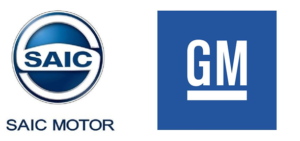What is Strategic Expansion?
Companies often need to commit a large amount of internal resources if they wish to fuel growth. However, there are ways that companies can partner with other organizations in order to mitigate the risks of expanding.
Types of Expansion
- Joint Ventures
- Strategic Alliances
- Franchising
1. What are Joint Ventures?
Joint ventures are created when two or more businesses work closely together on a project and form a separate business division to do so. In this case, Company A and Company B form a joint venture by creating Company C, which is a separate legal entity. Both parent companies decide beforehand what stake each will take in the child company (e.g. 50/50% stake, 60/40% stake).
| Benefits | Limitations |
|
|
What are Examples of Joint Ventures?
SAIC and GM

SAIC-GM, formerly known as the Shanghai General Motors Company Ltd., is a joint venture by General Motors Company and SAIC Motor. It was founded in 1997 with a 50-50 investment stake from each partner and continues to operate with this investment stake. The joint venture is headquartered in China and manufactures, as well as sells, Chevrolet, Buick and Cadillac automobiles in China. GM’s partnership with SAIC, a Chinese state-owned design and manufacturing company, enabled the company to enter into China and more cost effectively distribute its cars in the country.
Tata Global Beverages and Starbucks
In 2012, Tata Global Beverages and Starbucks came together to create a private limited company named Tata Starbucks Limited. This joint venture is owned 50-50 by both firms and operates in India. In this case, Tata Global Beverages leverages its expertise in tea manufacturing and production while combining this with the brand image that Starbucks has to create retail stores.
2. What are Strategic Alliances?
Strategic alliances are agreements between firms in which each agrees to commit resources to be able to achieve a common goal. In contrast to joint ventures, strategic alliances do not necessarily form a separate venture. These alliances can be made with several kinds of partners, including universities (e.g. to create a training course for the firm), competitors (e.g. to reduce the risk of operating in a foreign country) or even suppliers (e.g. to design materials that will be used in new products).
| Benefits | Limitations |
|
|
What are Examples of Strategic Alliances?
Spotify and Uber
![]()
In 2014, Spotify and Uber collaborated to enable Spotify premium users to control the music on their rides. Not all Uber users use Spotify, but this move from Spotify encourages the millions of Uber users to sign up for a Spotify premium account. At the same time, Uber users who have Spotify will have more control over their experience and may have more enjoyable rides.
Starbucks and Barnes & Noble
![]()
The strategic alliance between both companies led to Starbucks opening locations in many Barnes & Noble bookstores across the US. On Starbucks’ side, the company was able to benefit from increased brand awareness and paying customers. In the same way, having a Starbucks in each of its stores enabled Barnes & Noble to increase the quality of experience for customers as this enabled them to browse books in the café.
3. What is Franchising?
Franchising is an arrangement where a business uses the name, logo and processes of an existing business. The original business – also called the franchisor – grants another party called the franchisee rights to use its trademark and business processes. Often, the franchisee pays the franchisor a one-time franchise fee, in addition to a percentage of sales revenue as royalty payment.
| Benefits | Limitations |
|
|
What are Examples of Strategic Alliances?
McDonalds

McDonald’s is one of the best-known examples of franchises in the world. As of 2018, there were nearly 38,000 restaurants around the world – the majority of which are owned by franchisees. In the US, most McDonald’s locations are owned by franchisees, while the McDonald’s Corporation tends to own locations on major US highways. McDonald’s franchising model has enabled the company to become one of the most widespread American corporations. At the same time, having franchisees enables the McDonald’s Corporation to better adapt to cultural intricacies and consumer tastes in each franchisee’s respective country.
Marriott International
![]()
Marriott International allows franchisees to operate hotels and use its brand name. The franchise model allows Marriott to benefit from a low-risk growth strategy, especially as the hotel sector is capital-intensive and has high fixed costs. Furthermore, hotel revenues are very business cycle dependent and a downturn in the overall economy could greatly impact the company’s bottom line. On the franchisee end, starting a Marriott branded hotel is a way to immediately benefit from the branding and prestige of the Marriott name.